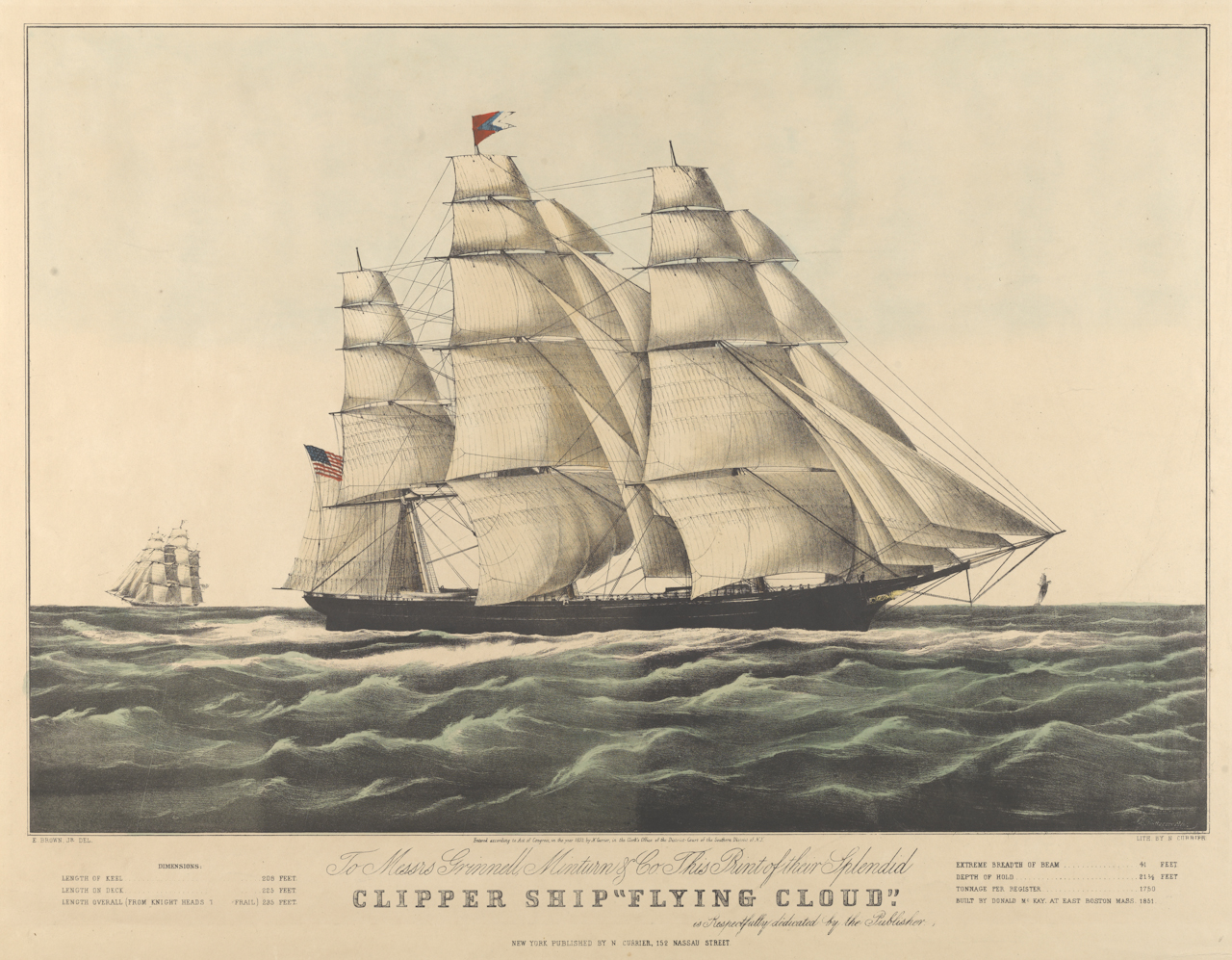Ahoy mate, look what's sailing by
Posted by Dale Edward Johnson on Aug 3rd 2022
The next time you’re navigating your way on the concrete sea, be on the lookout for a flotilla of corvettes, corsairs and caravelles – along with other cars with names that originated on the oceans.
Ask most people what the Corvette is, and they’ll tell you it’s a fast, expensive sports car. The name has become so associated with cars for almost 70 years that few know about its nautical origins; a corvette is a small warship.
Credit: GPS 56 from New Zealand
In spite of its aeronautical-sounding name, the Reo Flying Cloud, introduced in 1927, was actually named after America’s fastest sailing ship of the day. The Flying Cloud stayed in production until Reo got out of the car business to concentrate on trucks in 1936.
Credit: Public
The Mayflower ship was the logo for Plymouth from the late 1930s through the 1940s, and revived during the 1990s. The Mayflower was the ship that brought the pilgrims, who established the first permanent colony in New England in 1620. The ship had set sale 66 days earlier, and voyaged from Plymouth, England. When Walter Chrysler decided to challenge Ford and Chevrolet in the low-priced field in 1928, he chose Plymouth as the name for his new car saying, “this new product accurately typifies the endurance and strength, the rugged honestly, the enterprise and determination of achievement in the freedom from old limitations of that pilgrim band who were first American colonists.”
Plymouth never offered a car called Mayflower. However, the Plymouth division of the Chrysler Corporation was sometimes unofficially referred to as the Mayflower division.
The Plymouth version of the Chrysler minivan, introduced in 1984, was called the Voyager. A voyage is any journey by water or sea – something the Pilgrims did when they left Plymouth, England, in the Mayflower and landed at Plymouth Rock.
By the way, the Mayflower name did show up on another firm’s car – a small sedan offered by Triumph from 1950 to 1953.
Luxury Liner is a term applied to huge ships that offer posh ocean passage. Dodge borrowed the name Luxury Liner for some of its models to mark its 25th anniversary in 1939.
Credit: Sicnag
In 1941, Packard introduced its trendsetting Clipper model, with a name from clipper ships – speedy schooners made in the early 1800s, and so named because they could “clip” the passage time of regular ships. The Packard Clipper paid homage to its nautical roots, with a medallion that was a ship.
The name used by two auto makers during the 1950s – Corsair – had previously been used by a plane and a ship. The Corsair was a U.S. aircraft during the Korean War, but the term originally came from a type of pirate ship, popular from 1500 to 1850.
The name Corsair was first used on a model of the Henry J car from 1952 to 1954.
Then in 1958 when Ford was looking for model names for its new Edsel, one of the names chosen was Corsair. Ford of England later used the Corsair name on a mid-sized car in the 1960s. The Corsair name was been brought back for a compact Lincoln crossover starting in 2020.
The Nissan Armada uses a name that is a Spanish word for naval fleet.
The Caravelle name was used by Renault in the 1960s and Plymouth from the 1970s to 90s. The name comes from a small, light, fast ship, used by the Spanish and Portuguese from the 15th to 17th centuries.
Austin offered the Marina from 1973 to 1975.
Although they may not be as popular as historical figures or animals, oceangoing vessels have provided plenty of names for automobiles. Corvettes may be the flagships of nautically-named autos, but lots of other car makers have also looked at the seas to come up with some shipshape names.
Finding automotive restoration supplies is easy at Collectors Auto Supply, which has a full range of vintage auto parts. No matter what kind of collector car parts you are looking for, contact Collectors Autos Supply for all of your vintage car restoration parts.




